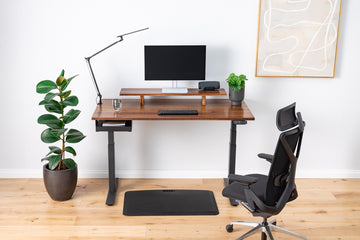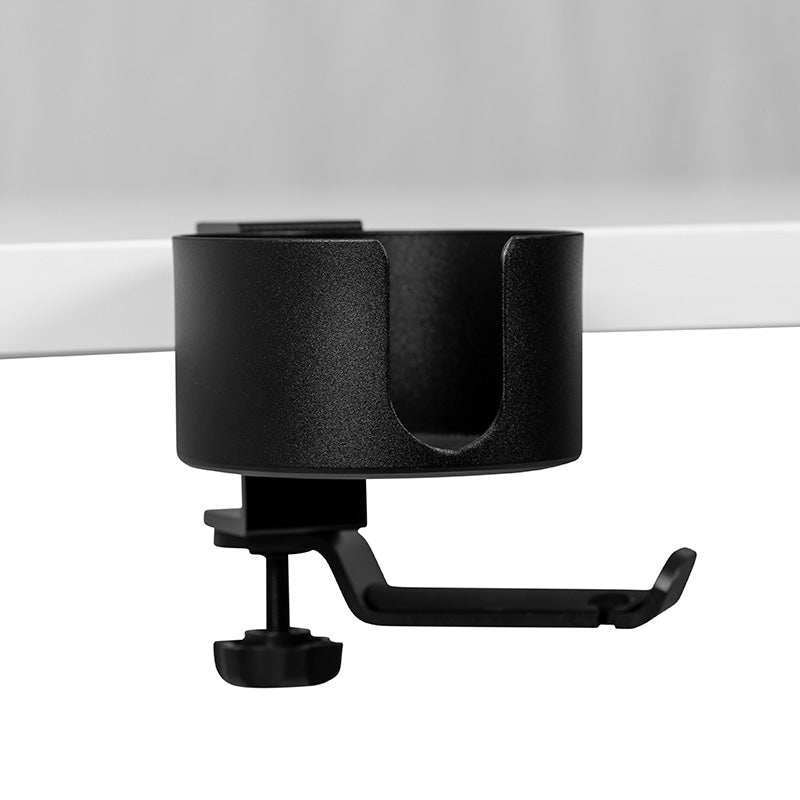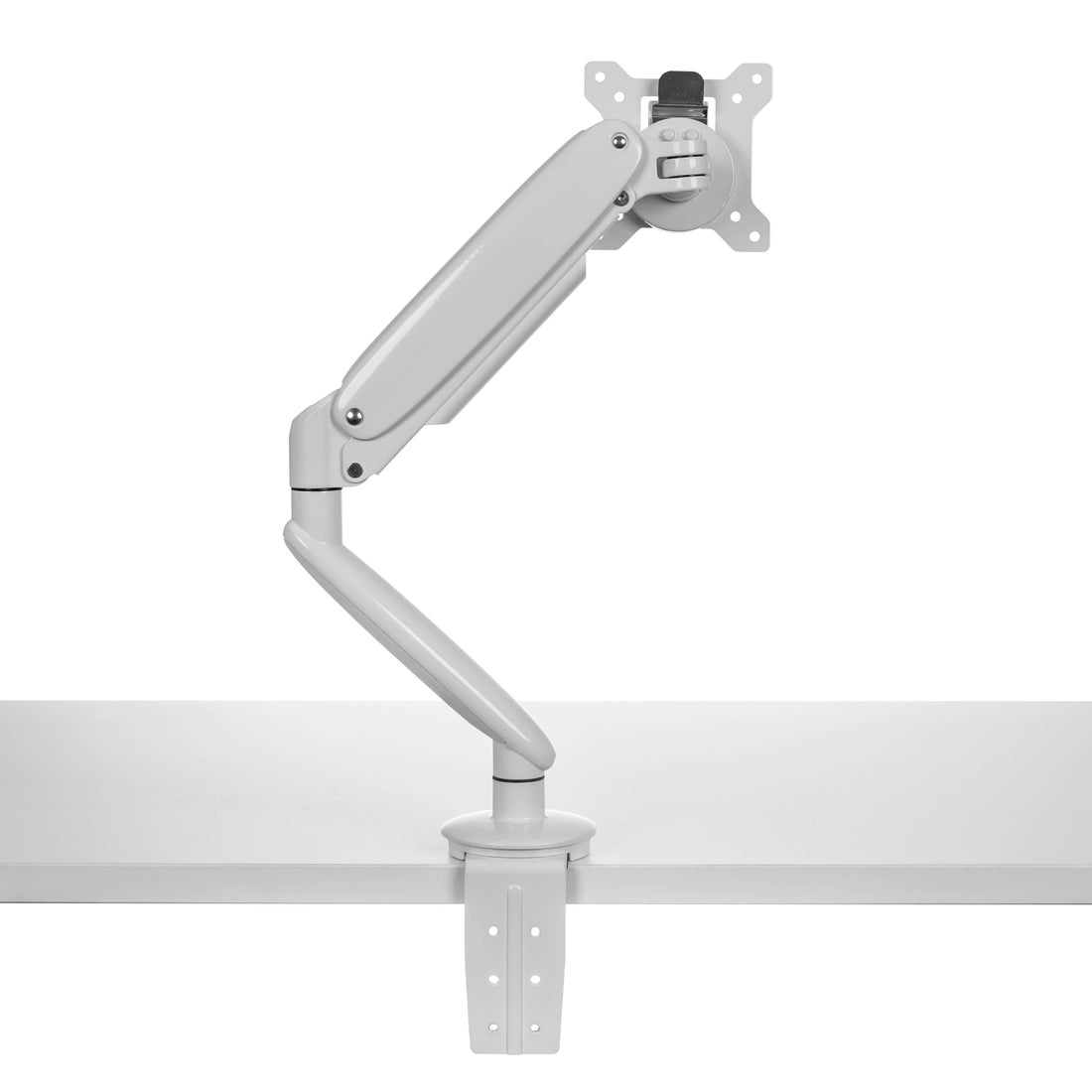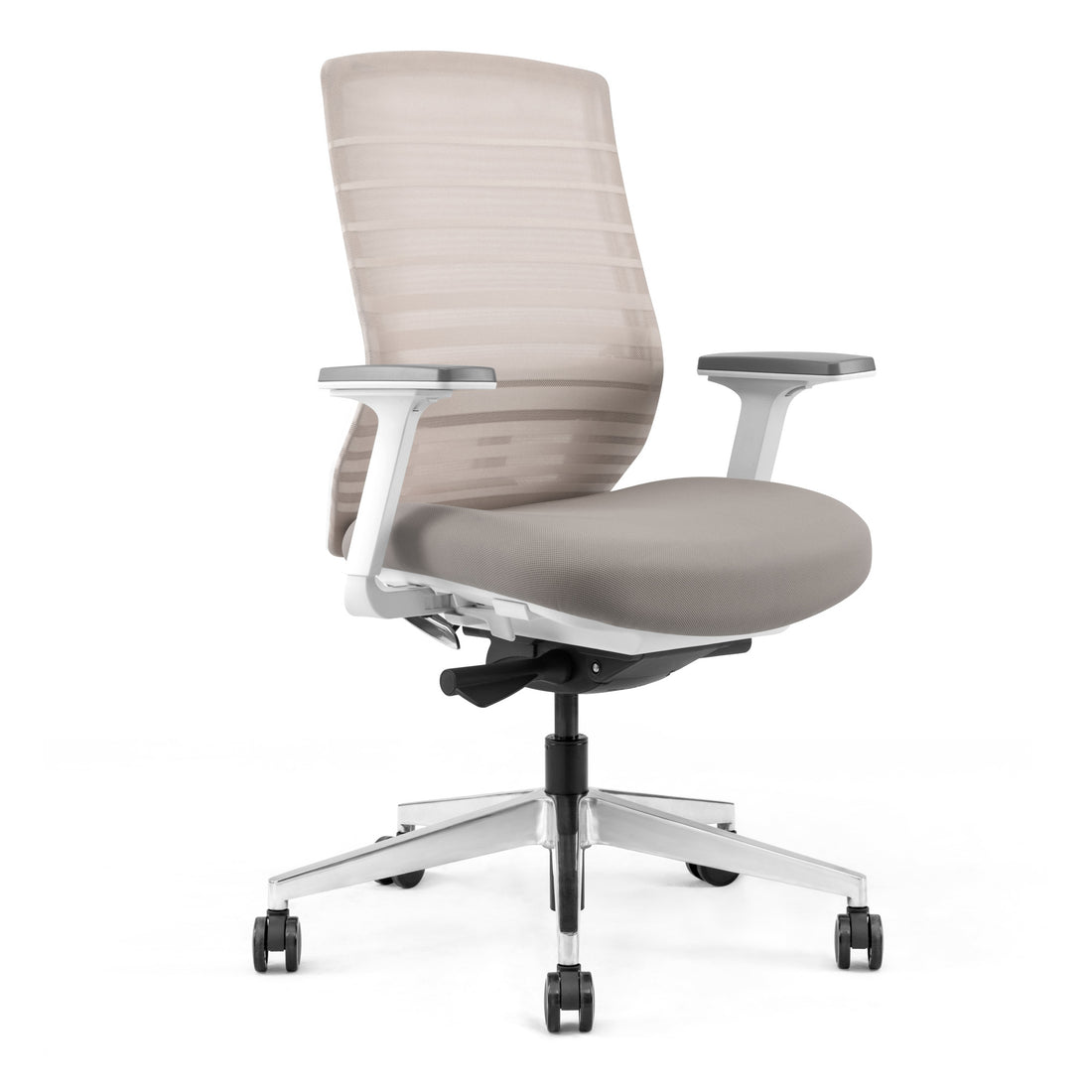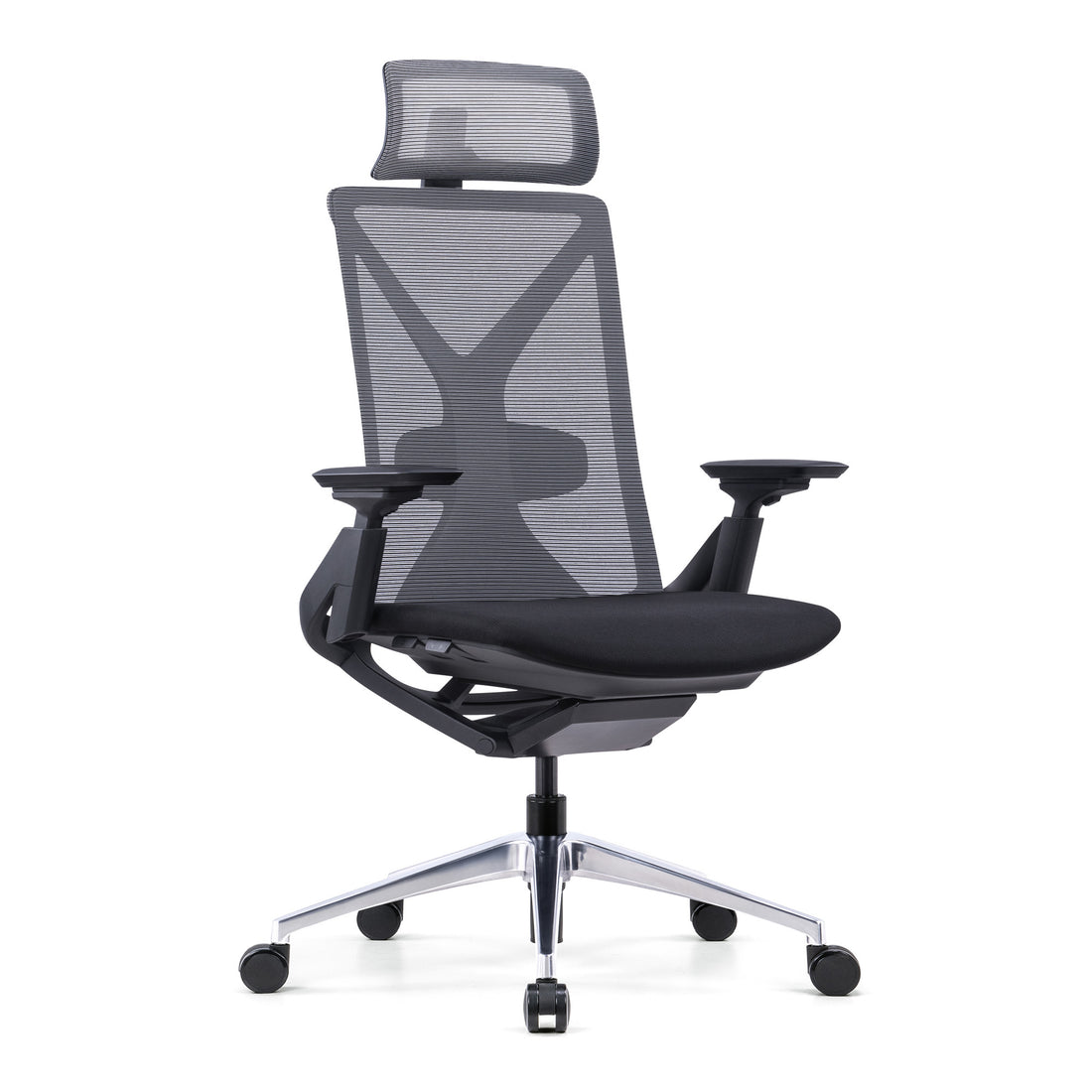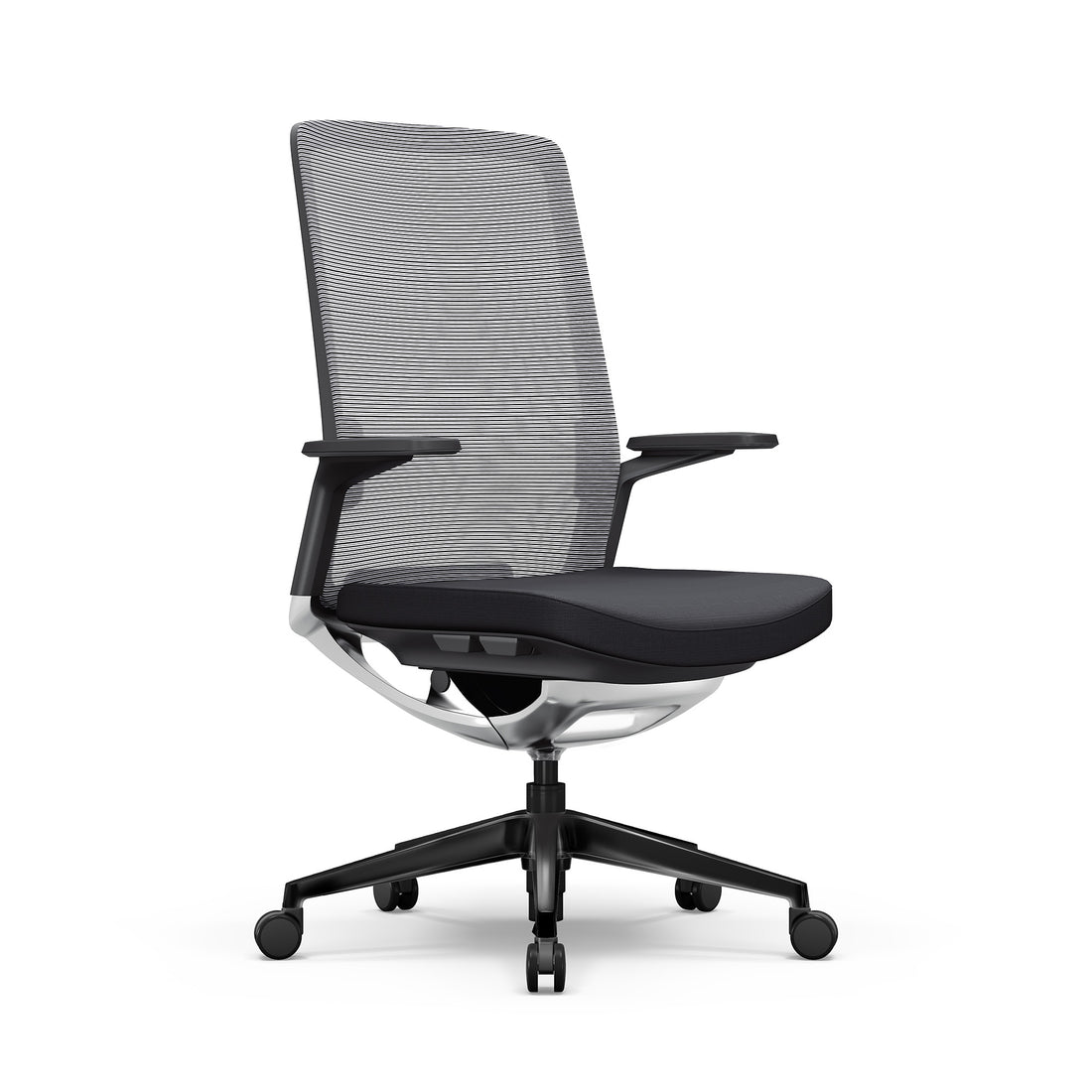Cardiovascular disease is one of the leading causes of death worldwide. Nearly half of all adults will suffer from hypertension (high blood pressure) at some point in their lives, which makes finding an effective solution to the problem paramount.
Interestingly, on top of their benefits to concentration, posture, and productivity, standing desks have also been measured to have a positive effect on lowering blood pressure.
Standing desks are gaining popularity at an unprecedented rate, and the internet is full of stand up desk related questions.
So is a standing desk better than sitting, and can the claims of health benefits be justified?
The answer is complex, but you’ll want to read on if your blood pressure is high.
How Standing Desks Decrease Blood Pressure
A sedentary lifestyle leads to increased blood sugar, insulin resistance, and weight gain. Add stress into the equation, and we amplify the problem.
All of these problems contribute to high blood pressure, which, in turn, increases the risk of heart attacks, cancer, and strokes.
So when we address one problem, we start to manage all of them.
Before standing desks have any direct effect on blood pressure, they effectively manage many of the associated symptoms like stress and posture.
Contribute to Weight Management
With the burgeoning rate of obesity, standing desks were initially thought to be a practical way to encourage weight loss.
Initial reports, however, overestimated the number of additional calories burned by standing during the workday.
More recent studies measuring actual energy expenditure found that the extra calories burned did not add up to much, meaning that the relationship between standing desks and weight loss is less than initially believed.
But that’s not the whole picture.
After just 30 minutes of sitting, your metabolism drops markedly. Standing desk exercises during the workday are a great way to give the metabolism a boost.
Furthermore, people who make one positive health change generally become more aware of the risks of other bad choices, generally embracing healthier habits.
Decrease Blood Sugar Levels

High blood sugar requires large amounts of insulin to lower it. This is a routine function that happens from time to time, but repeated occurrences can result in insulin resistance, leading to type 2 diabetes.
Good blood sugar management, therefore, contributes to normalising blood pressure.
A meta-analysis of studies with a total of 794,577 participants concluded that the more time spent sitting still, the higher the risk of diabetes. There was a measured 112% increase of risk in the most sedentary group.
Further research carried out at the University of Leicester found that overweight or obese women at risk of developing type 2 diabetes experienced not only a 20% drop in insulin levels but a 34% lower rise in blood sugar if they stood intermittently during their 7.5-hour workday.
Decrease Stress and Anxiety
Symptoms of anxiety and depression are commonly associated with sedentary behaviour.
Stress has a direct impact on blood pressure. The brain perceives stress and anxiety as a threat and in response releases cortisol, which constricts the arteries, raising blood pressure.
Having the option to stand intermittently during the workday without affecting workflow is one of the benefits of standing desks.
Standing allows movement, which significantly reduces anxiety levels. This helps to maintain mental wellbeing and acts as a physical coping mechanism.

This is what makes standing desks for students with ADHD a worthwhile investment. Being able to move and direct nervous energy elsewhere allows you to focus more on your work and decreases the feeling of stress and anxiety.
Pain and discomfort further contribute to stress and anxiety. Repetitive motion injuries are common to desk-bound workers.
A well set up and ergonomic workstation can negate much of the physical discomfort caused by prolonged sitting.
What Does Science Say?
There’s been some debate among health experts whether sit-to-stand desks actually provide any significant health benefit.
Detractors of adjustable desks argue that prolonged standing may negatively affect health—for example, a link between standing desks and varicose veins or standing desks and back pain.
But should you be using a standing desk all day?
Prolonged standing is not the point of a sit-to-stand desk. Even with fixed height desks, appropriately high chairs are available to allow for alternating between sitting and standing.
Many modern electric sit stand desks are now purposefully made to be variable allowing for an easy transition from sitting to standing.
Adjusting to a standing desk can take a week or two, but a sit-to-stand desk accommodates individual transition.
A randomised controlled trial, the gold standard of studies, showed that intermittent standing during prolonged sitting during desk work significantly reduced blood pressure.
The authors concluded that regular use of a height-adjustable desk might be a practical way to lower blood pressure.
A Solution to Lifestyle Disease
Lifestyle disease refers to a series of conditions associated with unhealthy lifestyle choices.
Poor diet, lack of sleep, sustained levels of stress, and a sedentary lifestyle are the primary contributing factors.
But what does this have to do with blood pressure?
Primary hypertension is the most common form of high blood pressure and has no single identifiable cause.
This is why we need to approach the problem from multiple angles rather than relying on a singular method of treatment.
Standing desks don’t deal with blood pressure problems directly, but they do address many of the underlying causes of hypertension, making them an effective tool in our arsenal to attack the problem.
Did you find our blog helpful? Then consider checking:


